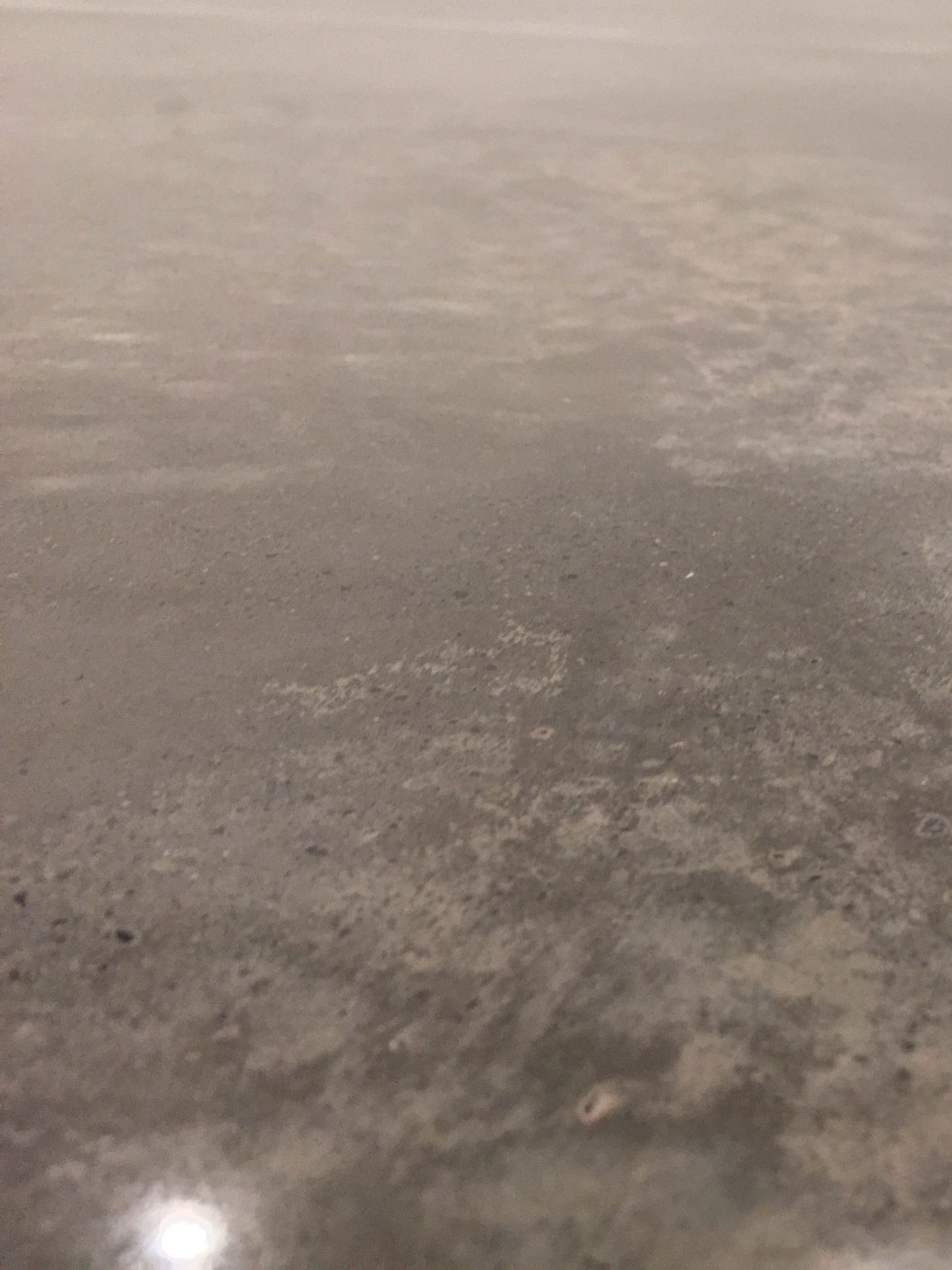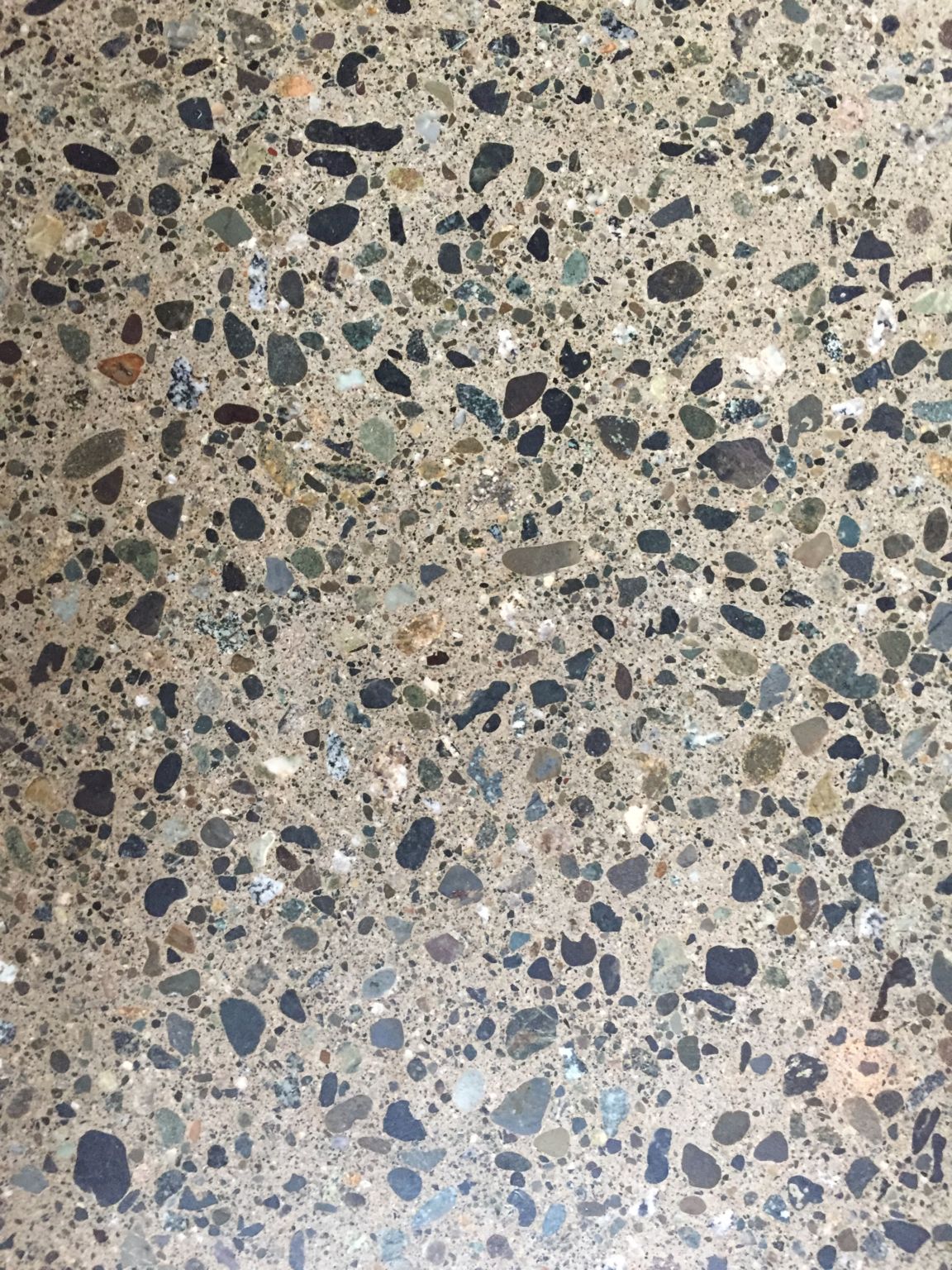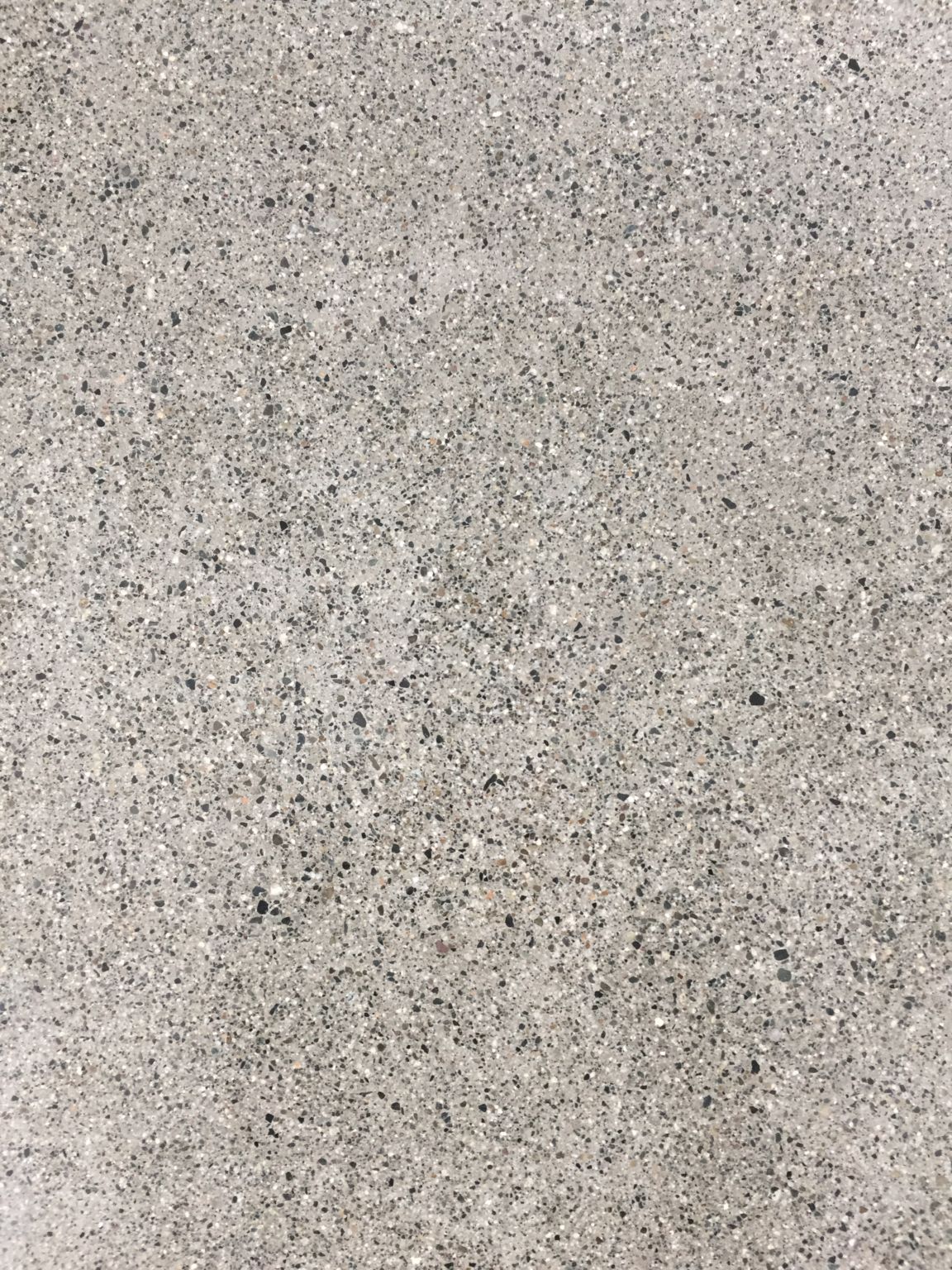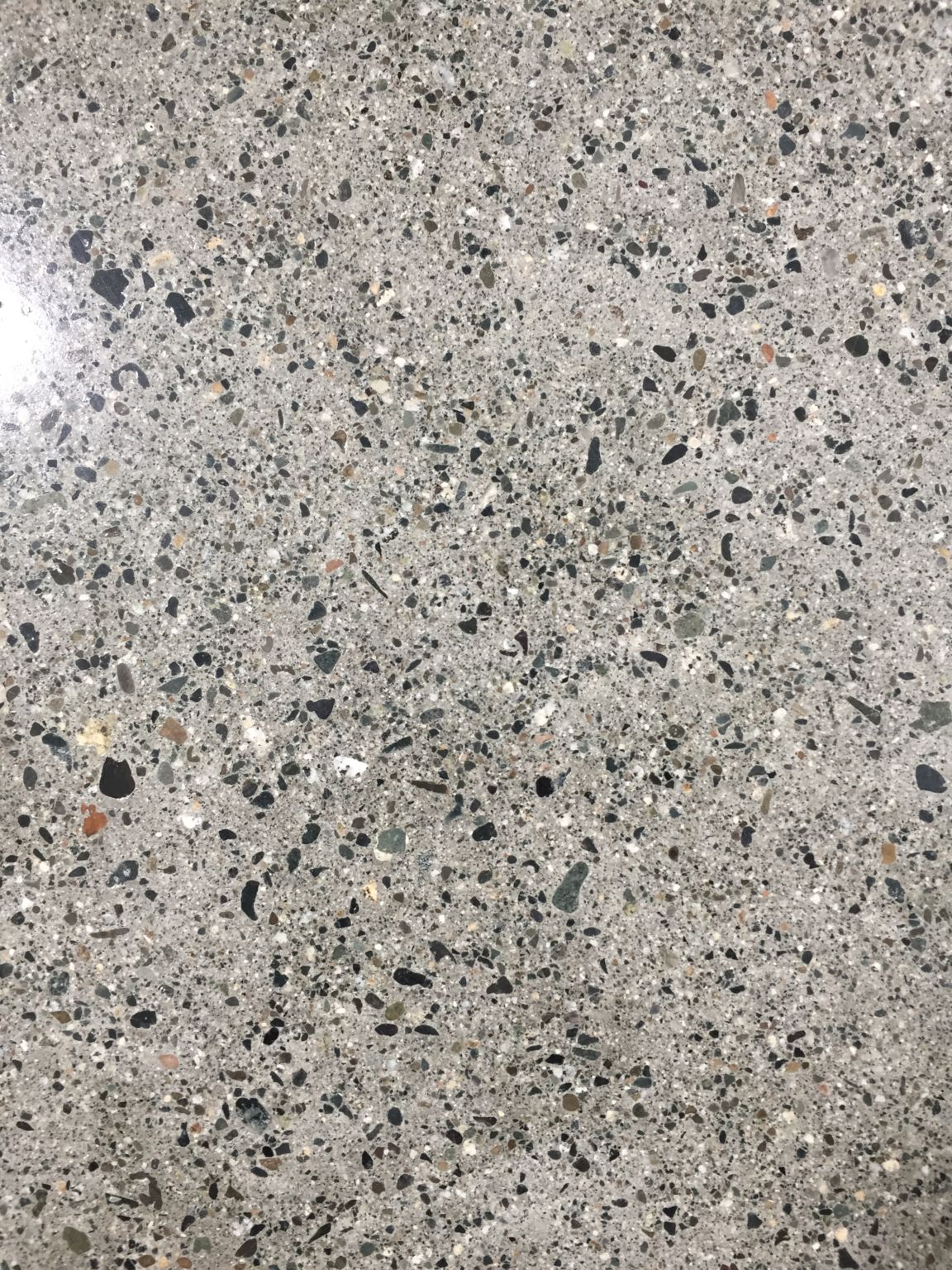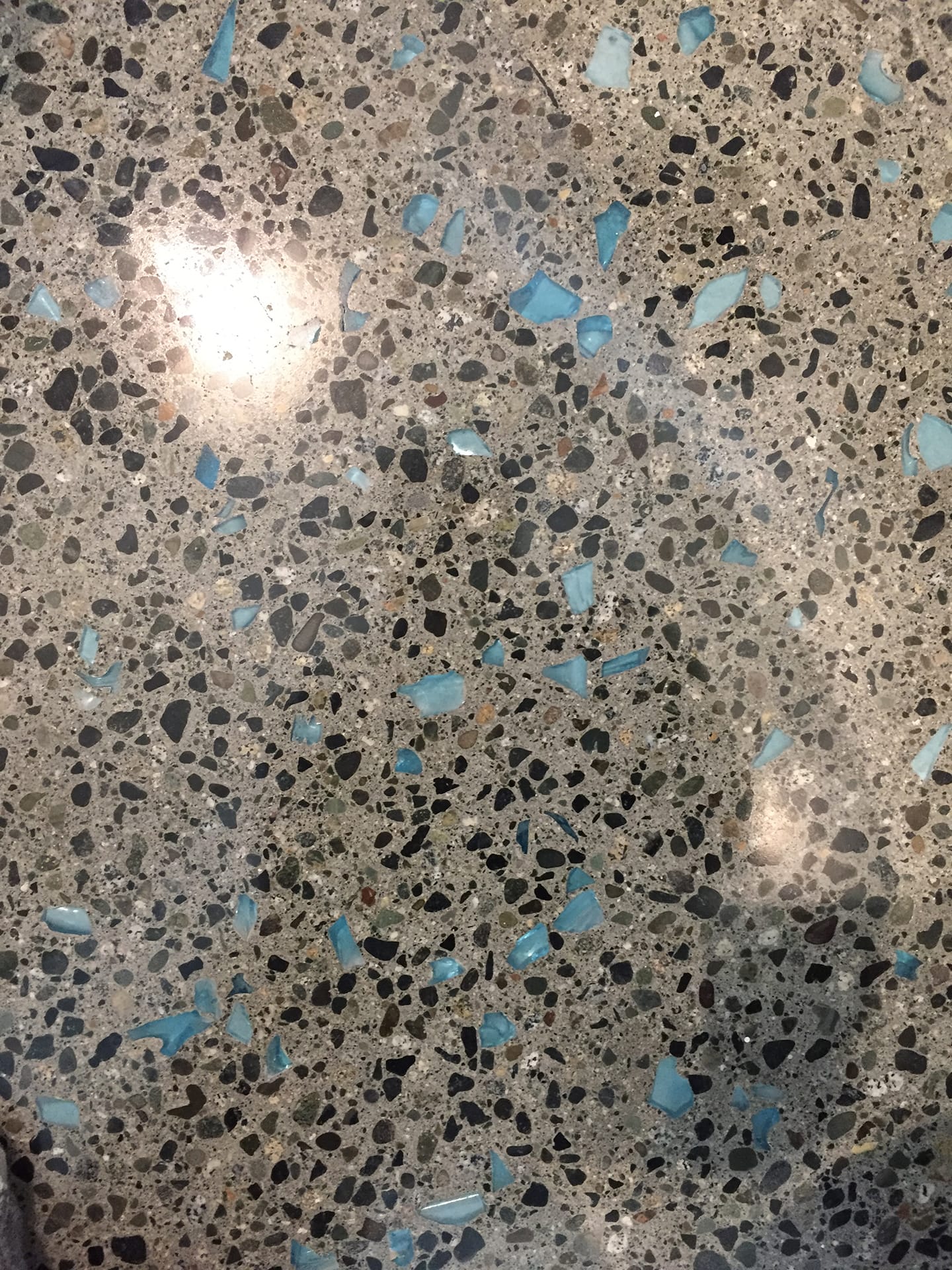With dreams of enhancing an existing concrete floor, you might be discouraged when you pull up existing flooring to discover markings and damage left by tack strips, adhesives, and cracking.
Where did these cracks come from? Concrete is a material composed of sand, cement, aggregate and water. After concrete is placed, the evaporation of excess water begins. Depending on how much water was used when the mix was poured, will determine how much shrinking and subsequent cracking occurs. Concrete will always shrink and some cracks will be inevitable. Proactively, we can reduce shrinkage with a proper substrate prep before the concrete is initially poured. Once a slab is poured we can accommodate, and in many cases, control the cracks by placing the saw cuts where we want and in the design we want.
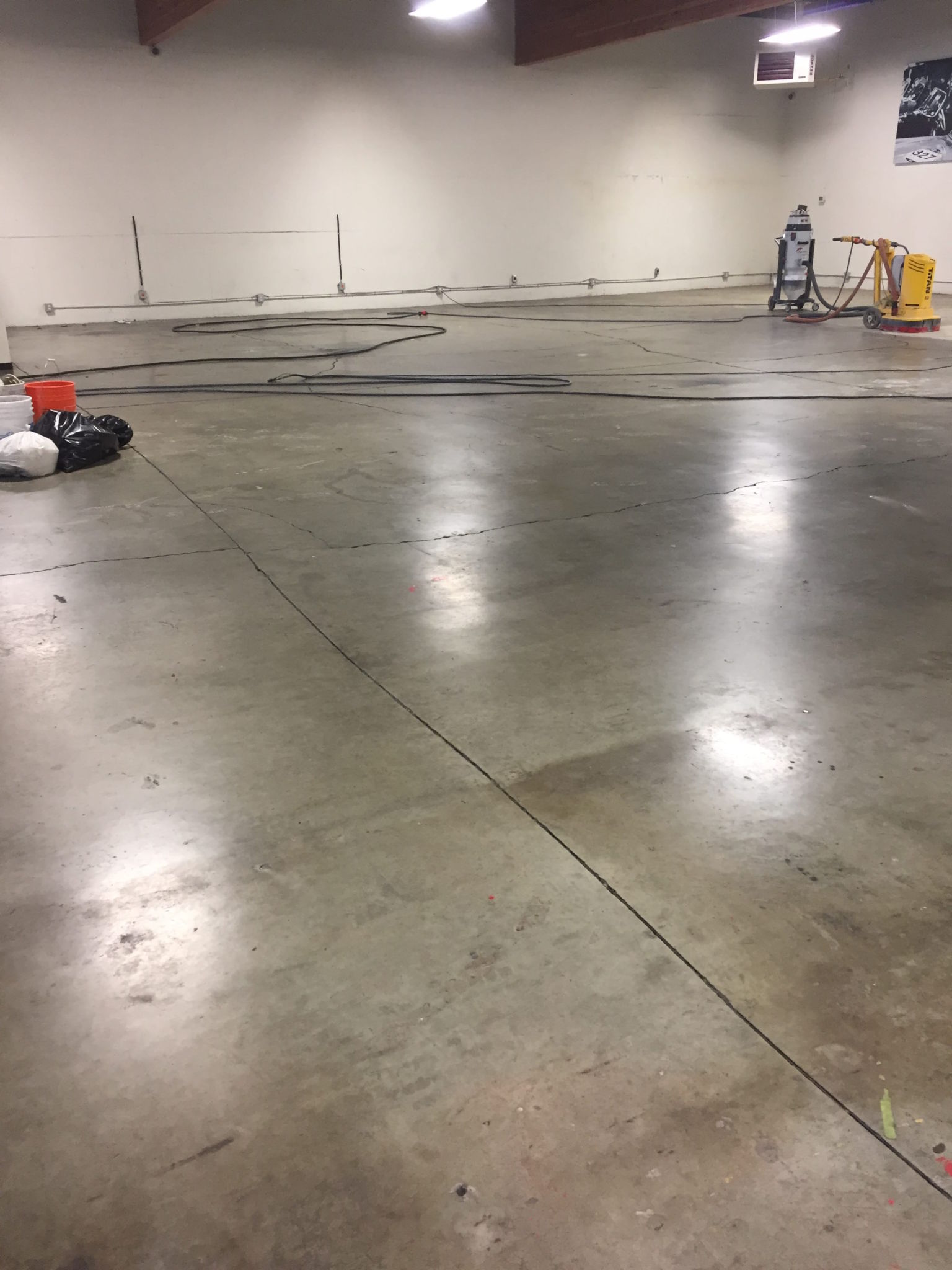
silver arrow cars – cracks before

silver arrrow cars – cracks after
Peoples’ response to cracks in concrete are varied. Some will embrace them and wish to accentuate them as an earthy, rustic design element. To do this the cracks can be filled in and colour applied. Patched cracks can be made darker or lighter than the rest of the floor to create a crackled, marbled, or veined look that is timeless, valued for its history, and at home with both modern and traditional interior designs.
There are those free spirits who will use the cracks to guide their design. Create a fractured look by following the random patterning and create a one of a kind abstract floor.
When the eye of the beholder prefers order and purpose, decorative line cuts in a symmetrical pattern on the floor helps to detract from the random nature of cracks.


